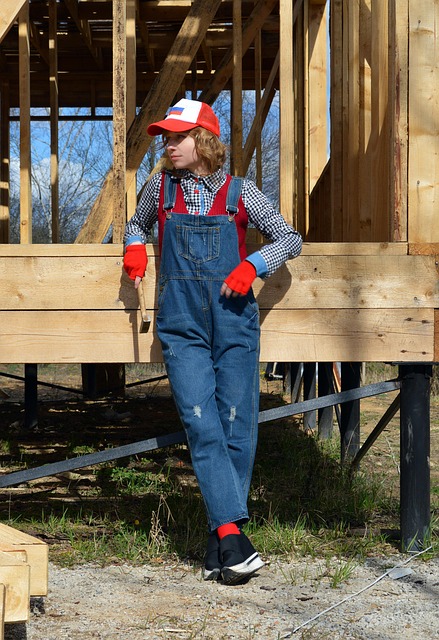Pier and beam foundations, known for their layout flexibility and load-bearing capacity, require regular maintenance due to potential issues like settling, shifting soils, or improper construction. Identifying slab transition damage early is crucial. Repairs involve assessing damage ranging from concrete cracks to misaligned beams, using methods like carbon fiber wrapping or complete Pier and Beam Foundation Repair with advanced materials for enhanced stability and durability. Proper material selection, including high-quality concrete mixes and waterproof membranes, ensures long-term repair success. Regular inspections, timely repairs, and proper drainage are vital for maintaining the structural integrity of pier and beam foundations.
In many older homes, pier and beam slab foundations are a common structural support system. Over time, these foundations can experience transition damage due to various factors like settling, shifting soil, or poor initial construction. Recognizing signs of trouble early is key, as proper repair methods and durable materials can restore stability and longevity. This guide covers everything from understanding the foundation type to choosing the right materials and preventive maintenance tips for effective pier and beam slab transition repair.
Understanding Pier and Beam Foundations: A Basic Overview

Pier and beam foundations, also known as post-and-beam foundations, are a common structural system used in many residential and commercial buildings. This type of foundation consists of vertical piers (posts) spaced evenly apart, supporting a horizontal beam that distributes the load of the building above it. The beams, in turn, support the slabs or floors of the structure. This design offers several advantages, including flexibility in layout design, ease of construction, and good load-bearing capacity.
However, like any foundation system, piers and beams can experience damage over time, requiring Pier and Beam Foundation Repair to ensure structural integrity. Issues such as settling, shifting soils, or poor initial construction can lead to cracks in the beams or piers, misalignment, or gaps between components. Regular inspection is crucial to identify these problems early on, preventing more significant and costly repairs down the line.
Identifying Signs of Slab Transition Damage

Identifying signs of slab transition damage is crucial in maintaining a pier and beam foundation repair. One of the first indicators is uneven floors, walls, or doors. If you notice that your floors are no longer level, or your doors and windows are sticking or not closing properly, it could be a sign of a problematic transition between the pier and the slab. Cracks in the concrete slab, especially those appearing in multiple locations or widening over time, are another red flag. These cracks can indicate structural instability caused by improper transitions.
Additionally, uneven settling or gaps forming around doors and windows can suggest that the pier and beam system is not evenly distributing weight, often due to damaged or missing supports during construction. Water damage is also a common issue, as moisture intrusion can weaken concrete and cause cracks or heave in the slab. Regular inspections are key to identifying these issues early on, preventing further damage, and ensuring the longevity of your pier and beam foundation repair.
The Causes Behind Pier and Beam Slab Transition Failure

Pier and beam slab transitions, while sturdy, are susceptible to failure due to several factors inherent in their design and installation. One primary cause is inadequate load-bearing capacity of the pier or beam, often a result of poor soil conditions or incorrect structural calculations during construction. Over time, excessive weight or stress on these elements can lead to cracks or instability, compromising the overall integrity of the foundation.
Another common issue is settlement differences between the slab and the supporting structure. This misalignment can occur due to changes in soil moisture content, fluctuations in temperature, or even uneven concrete curing. As the slab and beams settle at different rates, it creates stress points that can weaken the connection, leading to cracks, gaps, or misalignments visible at the transition point. Regular Pier and Beam Foundation Repair is essential to address these issues before they escalate, ensuring the longevity of the structure.
Repair Methods for Effective Restoration

When it comes to repairing a pier and beam slab transition, several effective methods can ensure a successful restoration. The first step involves assessing the extent of damage, which can range from cracks in the concrete to misaligned beams. Depending on the severity, techniques like carbon fiber wrapping or epoxy injection can be employed to strengthen and stabilize the structure. Carbon fiber is particularly useful for repairing minor to moderate cracks, offering both structural support and aesthetic benefits.
For more significant issues, a complete Pier and Beam Foundation Repair might be necessary. This often includes replacing damaged or deteriorated beams and piers while ensuring proper alignment and leveling. Modern techniques utilize advanced materials like steel braces and specialized concrete mixes to fortify the transition area, promoting long-term stability and durability. These methods are designed to withstand various environmental factors, guaranteeing a robust and secure foundation for any structure.
Choosing the Right Materials for Durability

When repairing a pier and beam slab transition, selecting the appropriate materials is key to ensuring longevity and stability. Concrete, being a durable choice for pier and beam foundation repair, should be considered as it can withstand heavy loads and maintain structural integrity over time. Opting for high-quality concrete mixes that include reinforcing bars (rebar) will enhance the repair’s strength and resistance to potential future issues.
The right materials also play a crucial role in preventing water infiltration, a common cause of pier and beam foundation damage. Using waterproof membranes and sealing agents during the repair process creates a protective barrier against moisture, which can significantly extend the life of the repairs and prevent further deterioration.
Step-by-Step Guide to Successful Transition Repair

Transition repairs are a crucial aspect of pier and beam foundation repair, ensuring structural integrity and longevity. Here’s a step-by-step guide to help you navigate this process successfully:
1. Assess the Damage: Begin by thoroughly inspecting the transition area between the pier and beam slab. Look for cracks, unevenness, or signs of settling. Identifying the extent of damage is essential for effective repair.
2. Prepare the Surface: Clean the affected zone, removing any debris, loose concrete, or surface imperfections. Use a wire brush or power washer to ensure the area is free from contaminants. This step ensures proper adhesion for the upcoming repairs.
3. Mix Repair Compound: Prepare a mixture of structural repair compound or epoxy according to the manufacturer’s instructions. The consistency should be smooth and easy to apply. For larger transitions, consider using a ready-mixed, high-strength product specifically designed for pier and beam repairs.
4. Fill and Level: Apply the repair compound along the transition, filling any gaps or cracks. Use a trowel or putty knife to ensure complete coverage and an even surface. Level the compound to match the existing slab, creating a seamless transition.
5. Cure and Strengthen: Allow the repair compound to cure according to the product’s specifications. Once cured, you can enhance strength with additional reinforcement, such as steel rods or mesh, if necessary for your pier and beam foundation repair project.
Maintenance Tips to Prevent Future Issues

Regular maintenance is key in ensuring the longevity of your pier and beam foundation. One of the primary steps to prevent future issues is inspecting the structure for any signs of damage or wear, especially around the transition areas between the pier and slab. Look out for cracks, uneven surfaces, or settling, as these can be indicators of potential problems.
Timely repair is crucial. Addressing small issues early on can save you from more significant and costly repairs later. Consider sealing any cracks using appropriate materials to prevent water penetration, which could lead to further damage. Additionally, maintaining proper drainage around the foundation will help mitigate moisture-related problems that might weaken the structure over time. Regular maintenance and quick action when issues arise are essential for a robust pier and beam foundation repair strategy.
